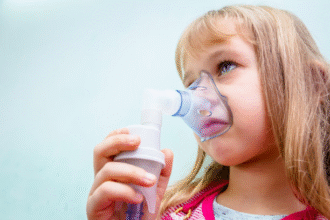Conjunctivitis (Pink Eye)
Conjunctivitis is inflammation of the conjunctiva, the transparent membrane lining the eyelids and covering the sclera. It presents with redness, discharge, irritation, and can be highly contagious depending on the etiology.
Key Points
- Four main types: viral, bacterial, allergic, and neonatal.
- Discharge character and associated symptoms help distinguish causes.
- Most cases resolve with supportive care; some require specific antimicrobial or anti-allergy therapy.
- Good hygiene and avoidance of eye rubbing prevent spread.
Clinical Types
- Viral Conjunctivitis
- Often caused by adenovirus; watery discharge, red eyes, foreign body sensation.
- May have preauricular lymphadenopathy; often part of a viral prodrome.
-
Highly contagious; outbreaks in schools and swimming pools.
-
Bacterial Conjunctivitis
- Common pathogens: Staphylococcus aureus, Streptococcus pneumoniae, Haemophilus influenzae, Moraxella catarrhalis.
- Presents with purulent discharge, eyelids stuck together on waking, mild discomfort.
-
Typically unilateral at onset but can become bilateral.
-
Allergic Conjunctivitis
- Triggered by seasonal allergens (pollen) or perennial (dust mites, pet dander).
- Intense itching, tearing, chemosis (conjunctival swelling), stringy mucoid discharge.
-
Often history of allergic rhinitis, bilateral presentation.
-
Neonatal Conjunctivitis
- Prophylaxis at birth with erythromycin ointment or povidone-iodine.
- Onset within 24 hours: chemical reaction to prophylactic agent.
- Days 2–5: Neisseria gonorrhoeae—hyperacute presentation with blistering, risk of corneal perforation.
- Days 5–14: Chlamydia trachomatis—milder, watery to mucopurulent discharge.
Symptoms and Signs
- Red or pink sclera and inner eyelids
- Tearing or discharge (watery, mucoid, or purulent)
- Gritty or burning sensation
- Eyelid swelling, crusting of lashes
- Photophobia and blurred vision in severe cases
Diagnosis
- Primarily clinical based on history and examination.
- Slit-lamp exam: evaluates corneal involvement and conjunctival follicles.
- Conjunctival swab for Gram stain, culture, or PCR when atypical, severe, or neonatal.
Management
Supportive Measures (All Types)
- Cold or warm compresses to alleviate discomfort.
- Artificial tears or lubricating drops multiple times daily.
- Avoid contact lenses until resolution; replace lens cases.
- Strict hand hygiene and avoid sharing towels or eye cosmetics.
Viral Conjunctivitis
- No specific antiviral therapy for adenovirus.
- Supportive care only; cold compresses and lubricants.
- Topical antihistamine/decongestants for symptomatic relief.
Bacterial Conjunctivitis
- Topical antibiotics:
- Trimethoprim-polymyxin B drops: 1–2 drops every 4–6 hours for 7–10 days.
- Erythromycin 0.5% ointment: apply to lower conjunctival sac 4 times daily for 7 days.
- For gonococcal infection: IM ceftriaxone 1 g single dose plus topical saline lavage.
Allergic Conjunctivitis
- Topical antihistamines (e.g., olopatadine 0.1% twice daily).
- Mast cell stabilizers (e.g., cromolyn 2–4 times daily) or dual-action agents.
- Short-term topical NSAIDs or corticosteroids under specialist supervision for severe cases.
Neonatal Conjunctivitis
- Gonococcal: IV/IM ceftriaxone per neonatal dosing guidelines, saline eye wash.
- Chlamydial: Oral erythromycin 50 mg/kg/day divided QID for 14 days.
- Chemical: Stop prophylactic agent; use lubricants; monitor for secondary infection.
Prevention
- Frequent handwashing; avoid touching eyes.
- Do not share towels, cosmetics, or pillows.
- Proper disinfection of contact lenses and cases.
- Avoid swimming in communal pools during active infection.
- Neonatal prophylaxis per local guidelines to prevent gonococcal ophthalmia.
Complications and Referral
- Corneal keratitis or ulceration: urgent ophthalmology consult.
- Persistent or recurrent symptoms despite therapy.
- Severe purulent discharge or preseptal cellulitis signs.
- Visual acuity changes or severe photophobia.
Patient Education
- Complete full course of prescribed drops/ointments.
- Maintain strict hygiene to prevent spread.
- Replace eye cosmetics after infection resolves.
- Return for re-evaluation if symptoms worsen or persist beyond 7–10 days.







